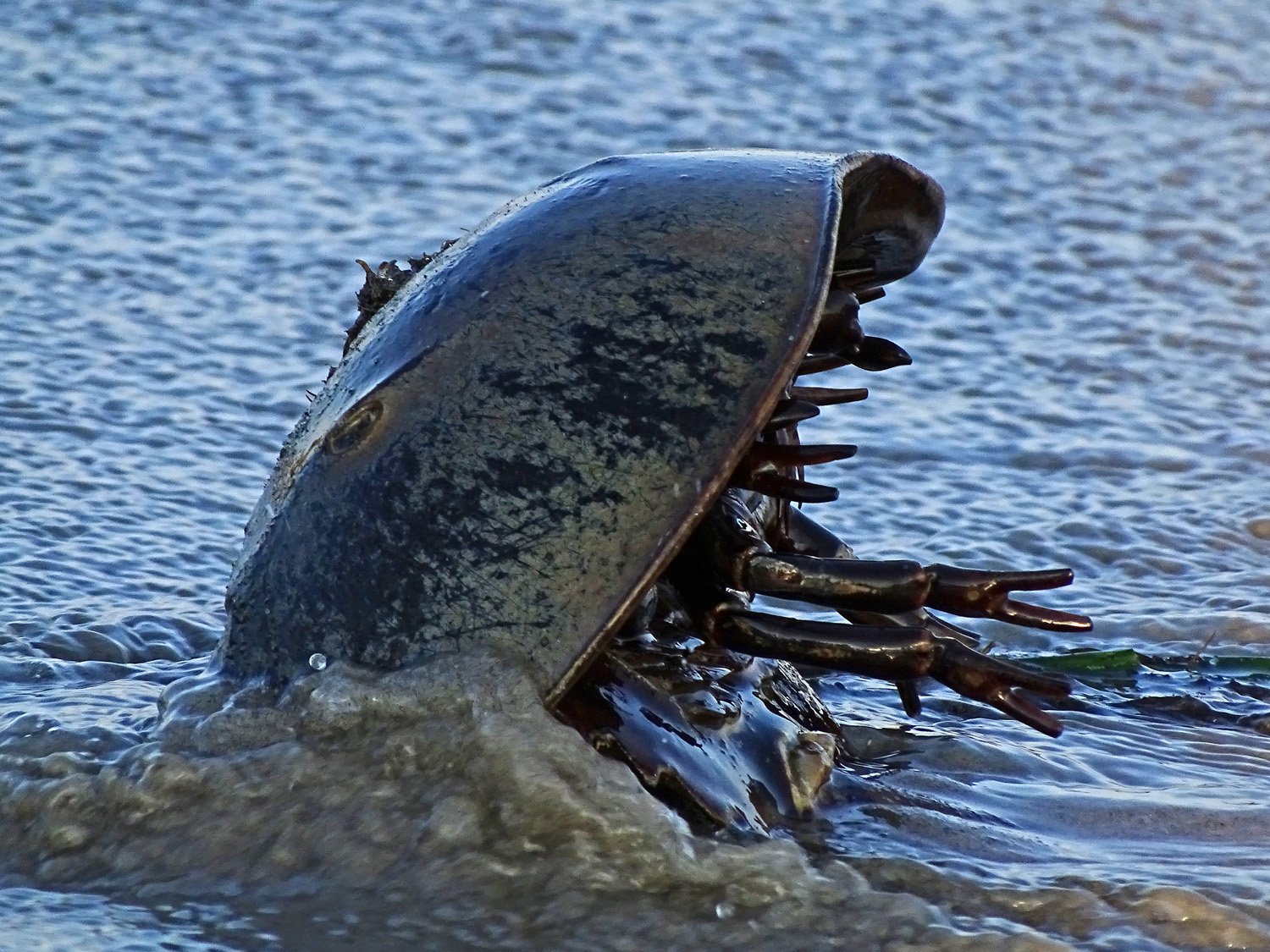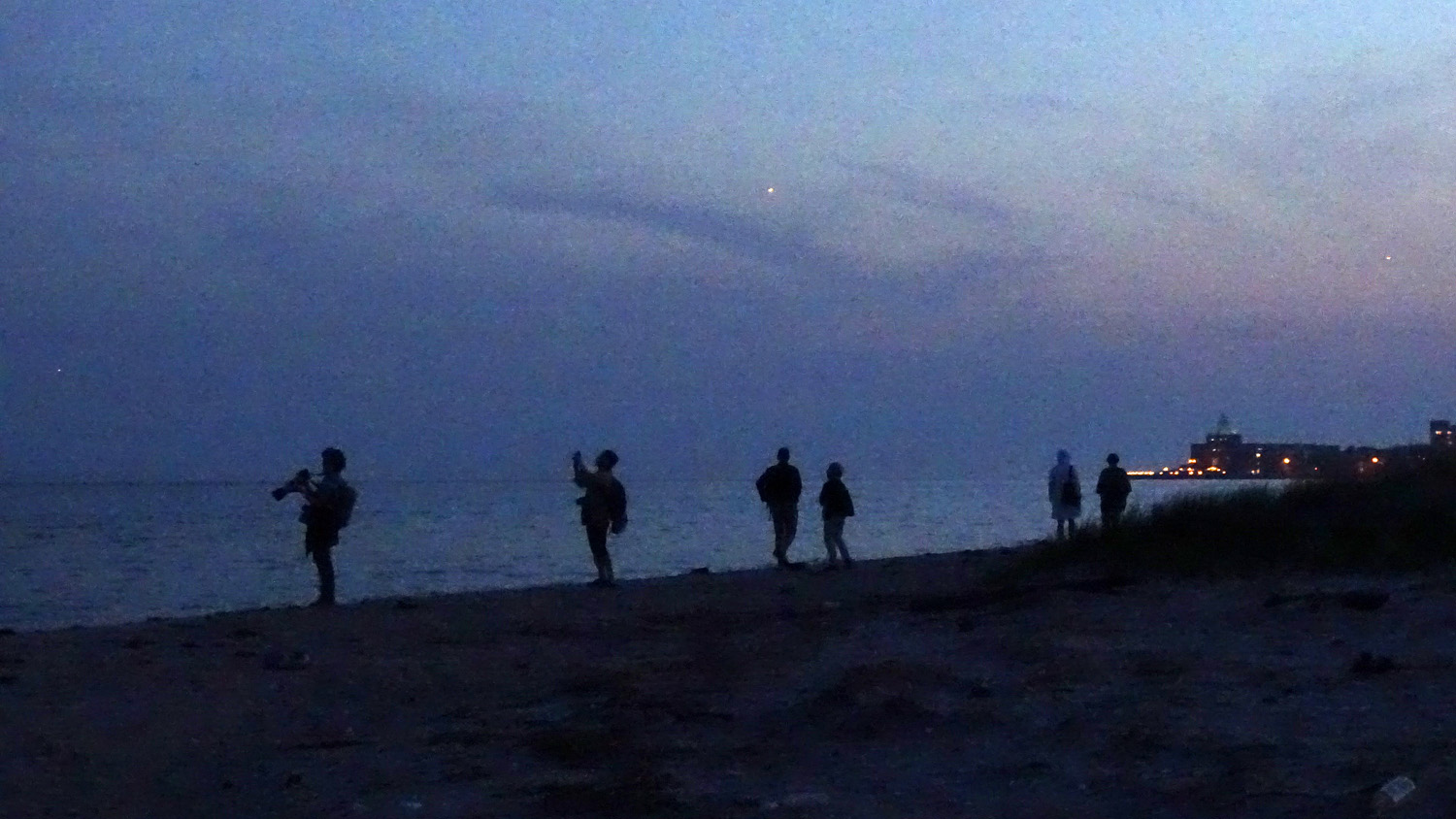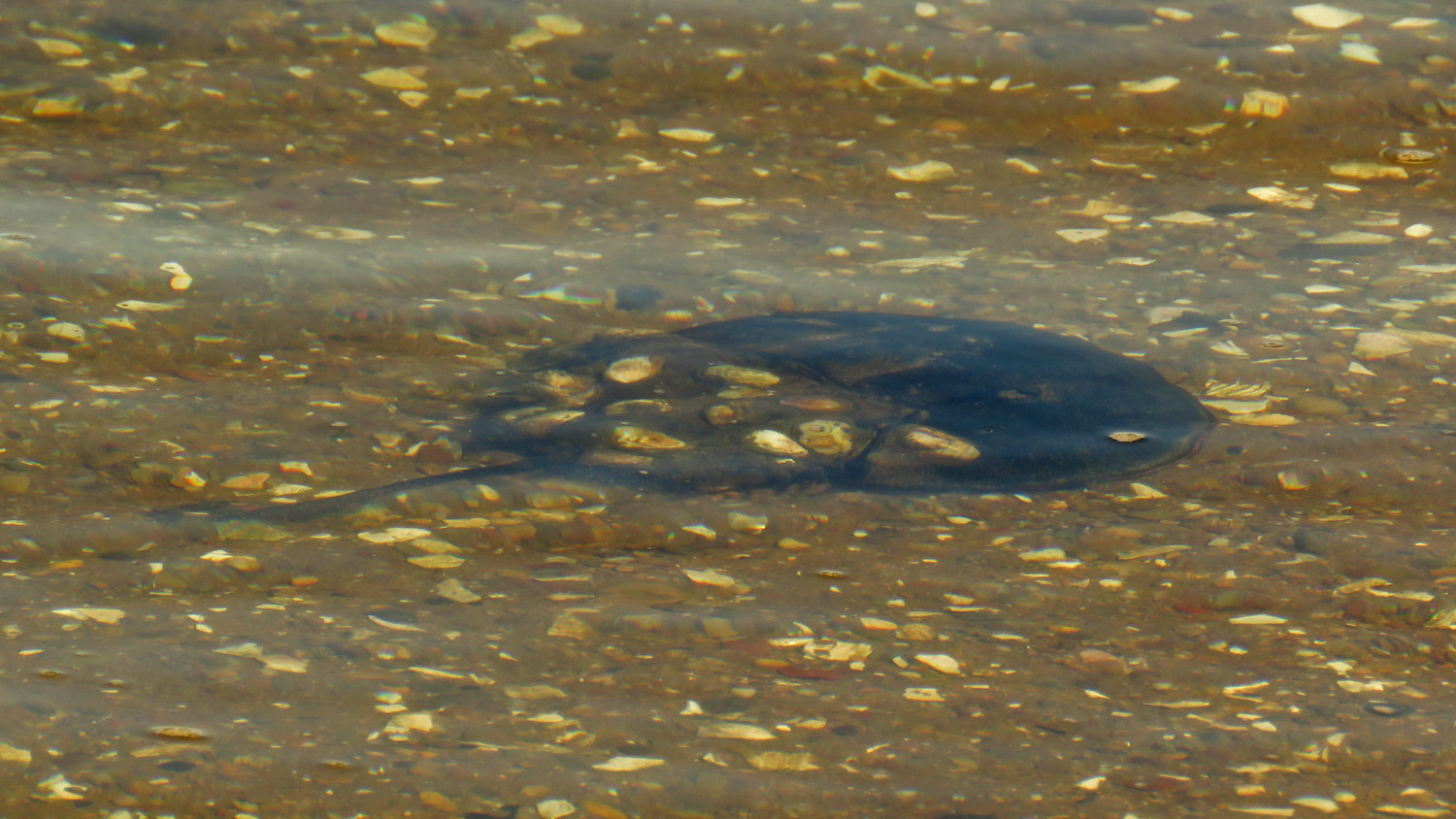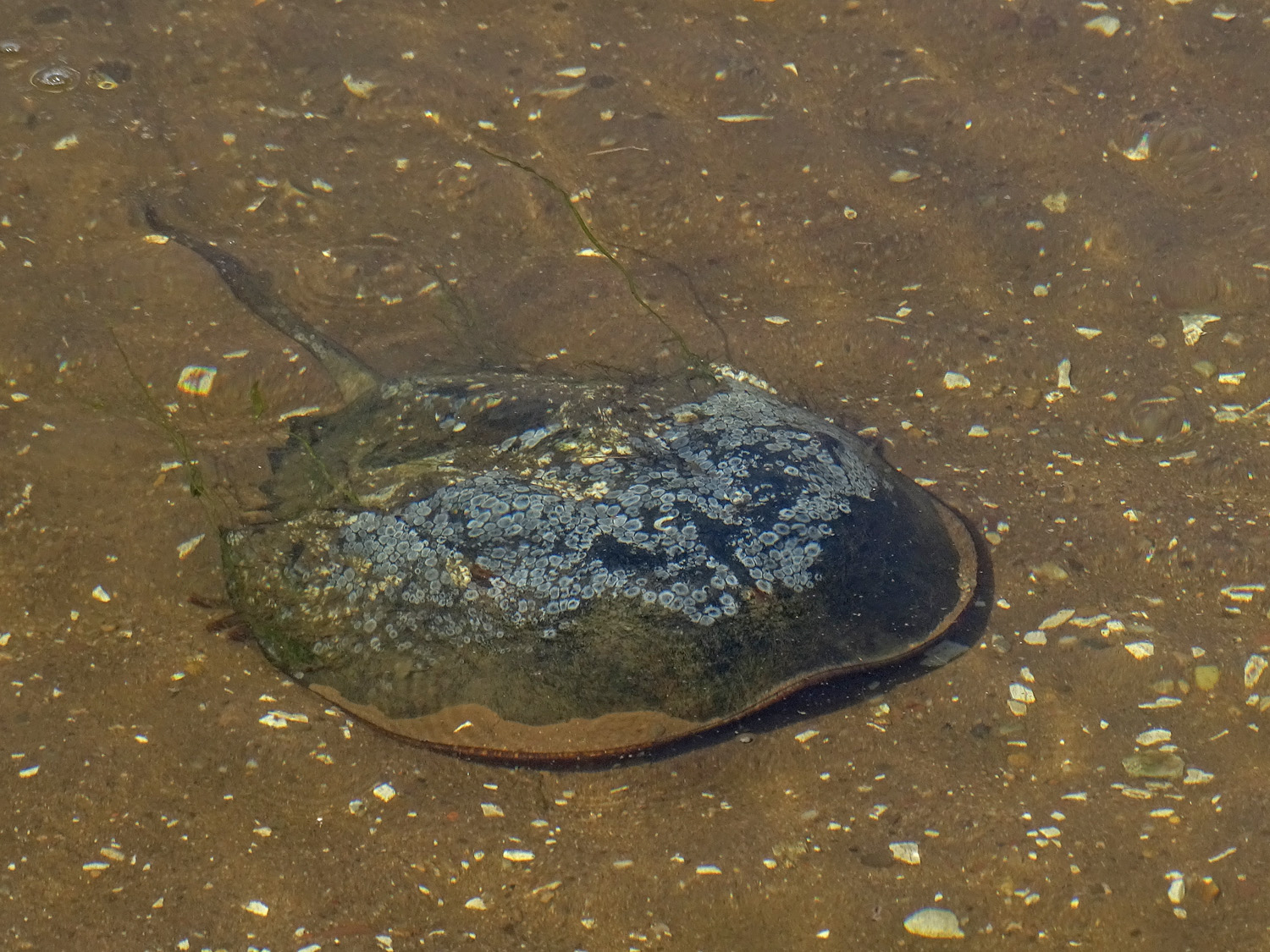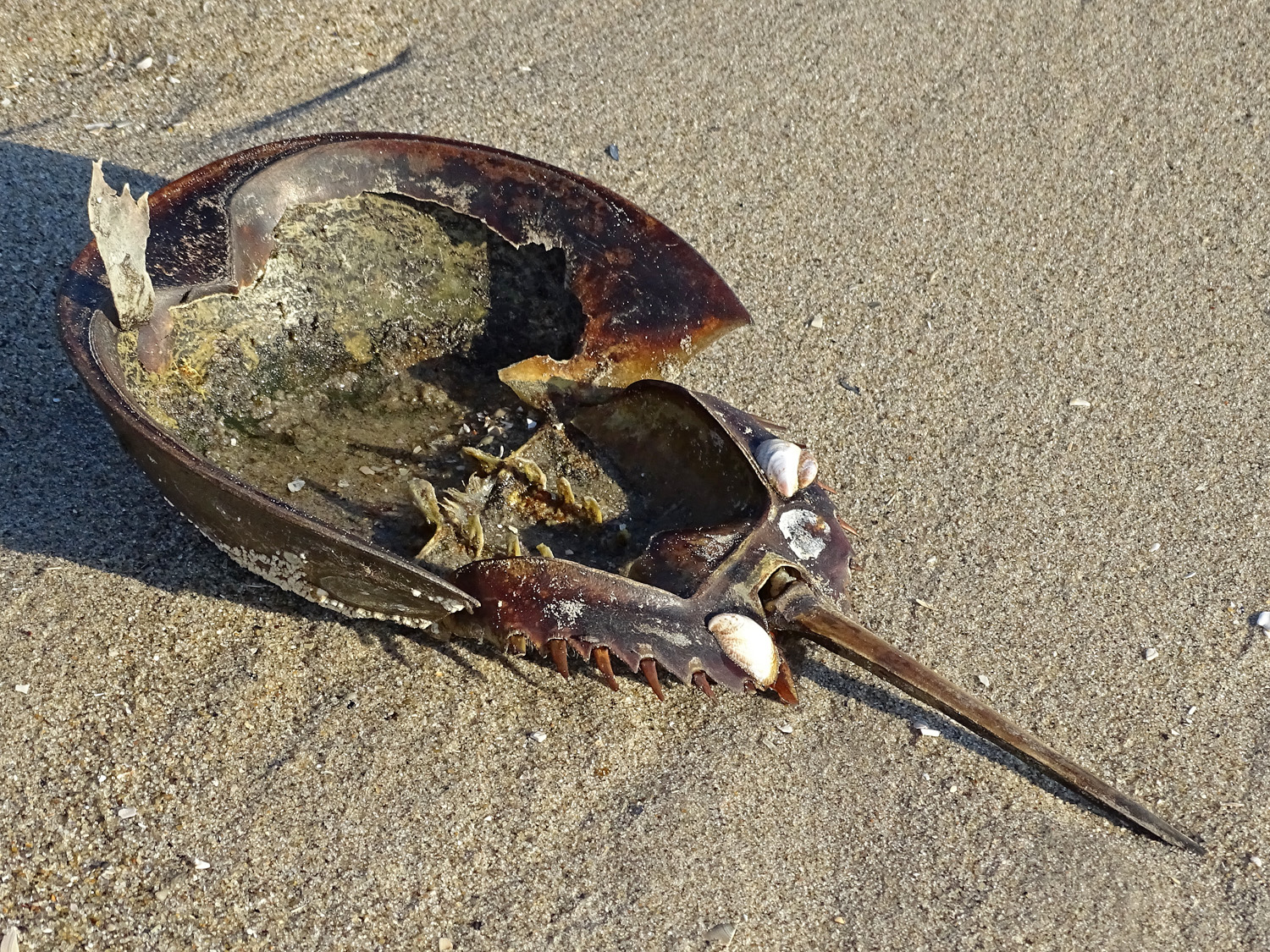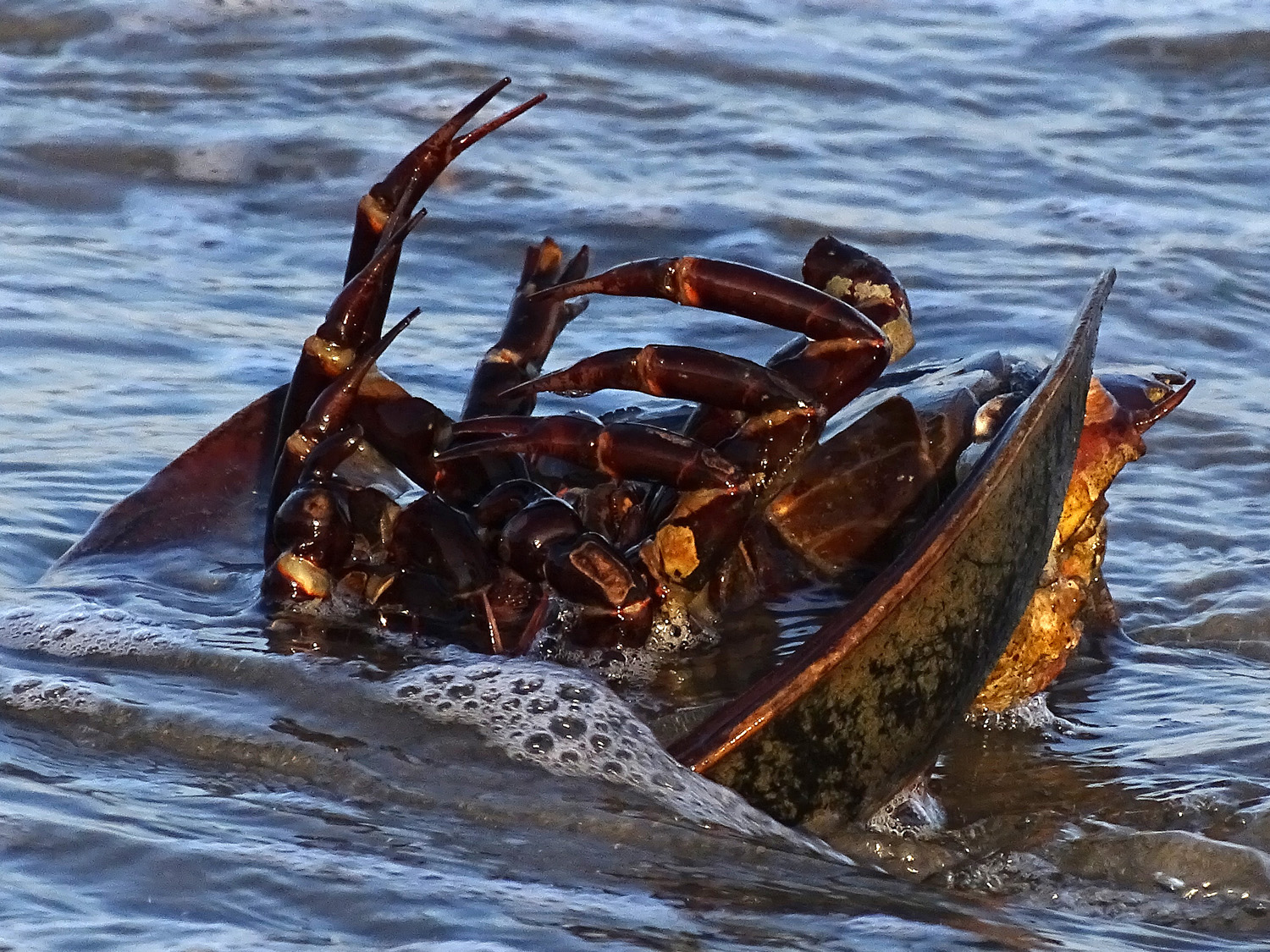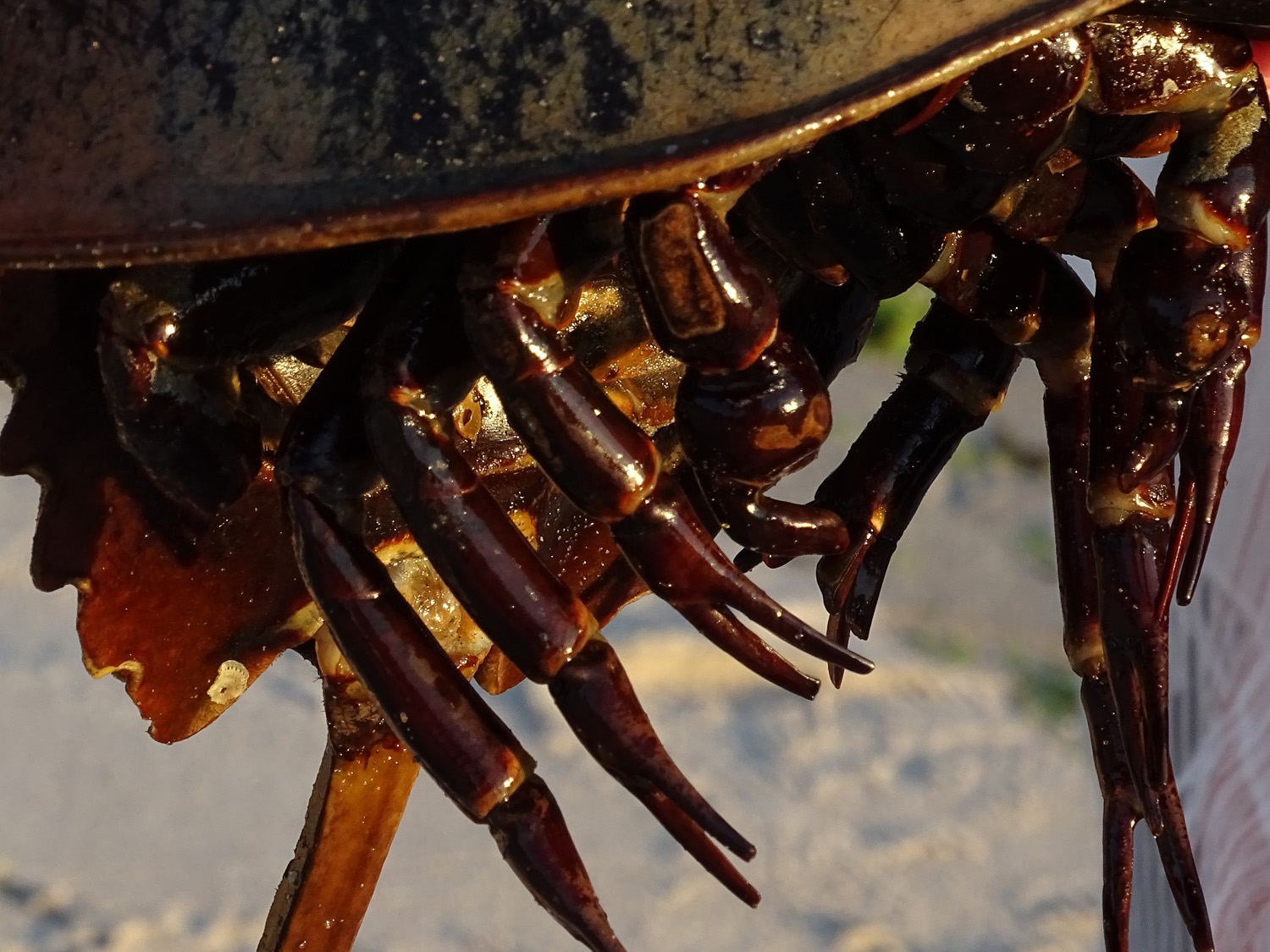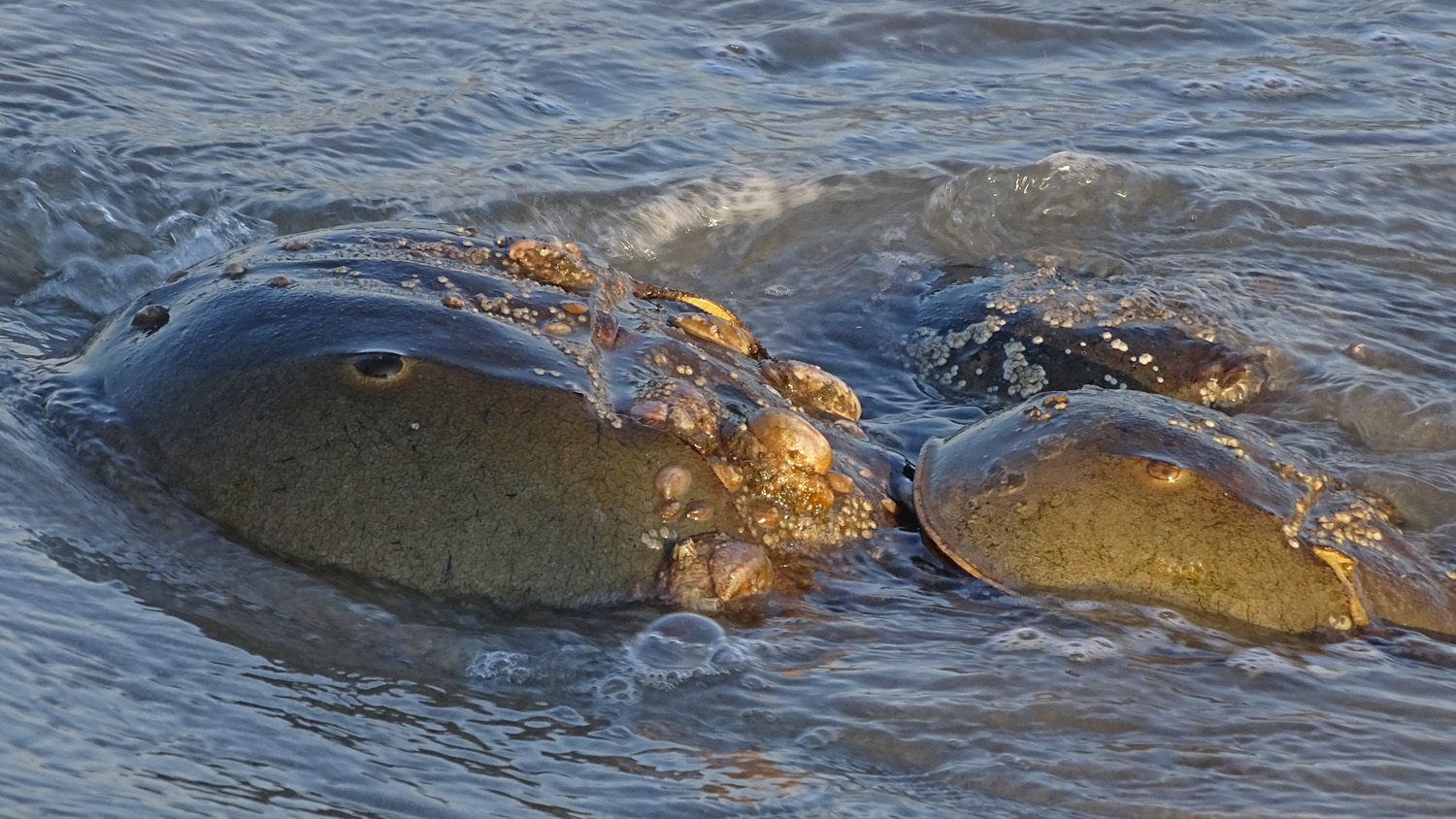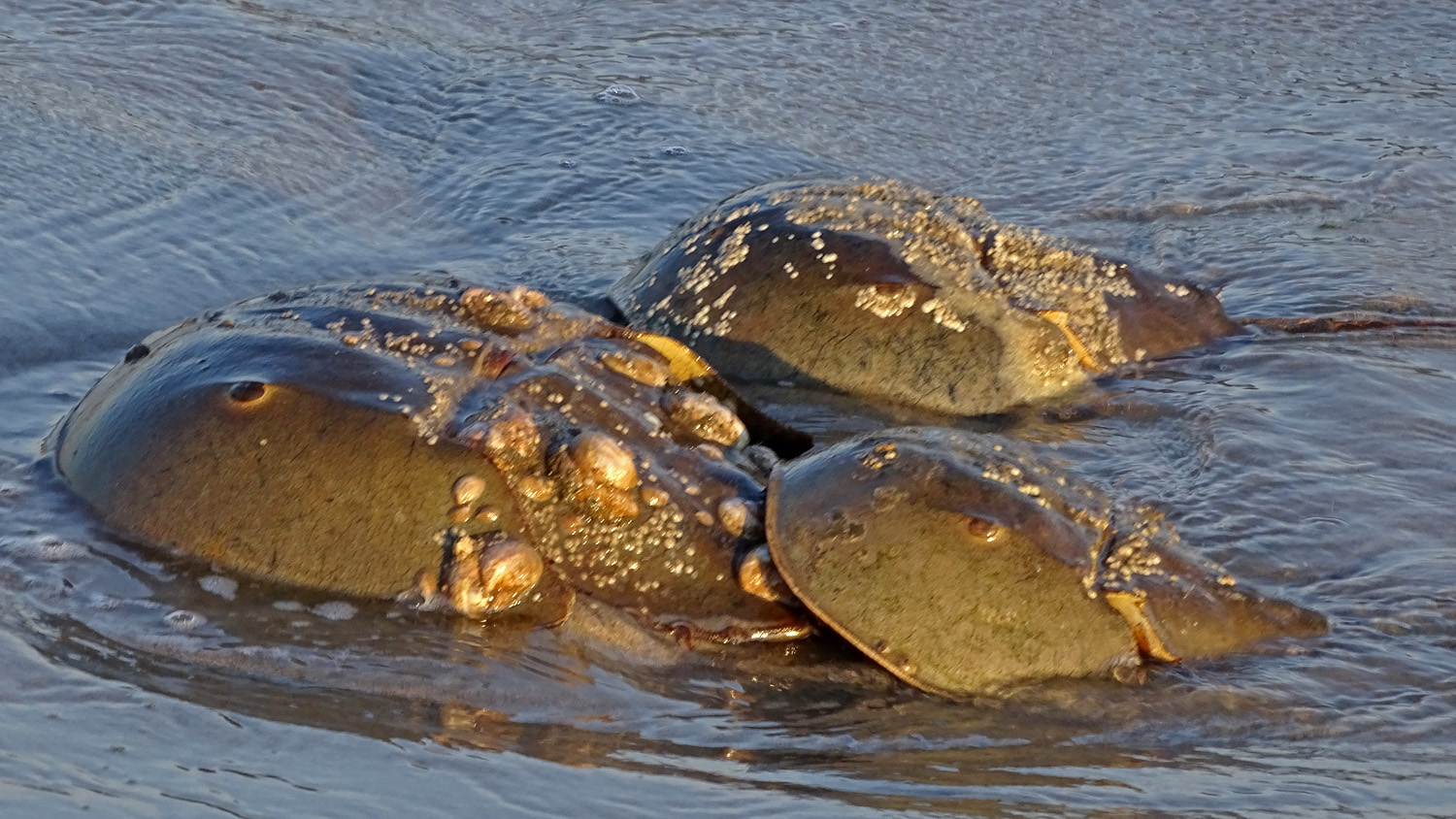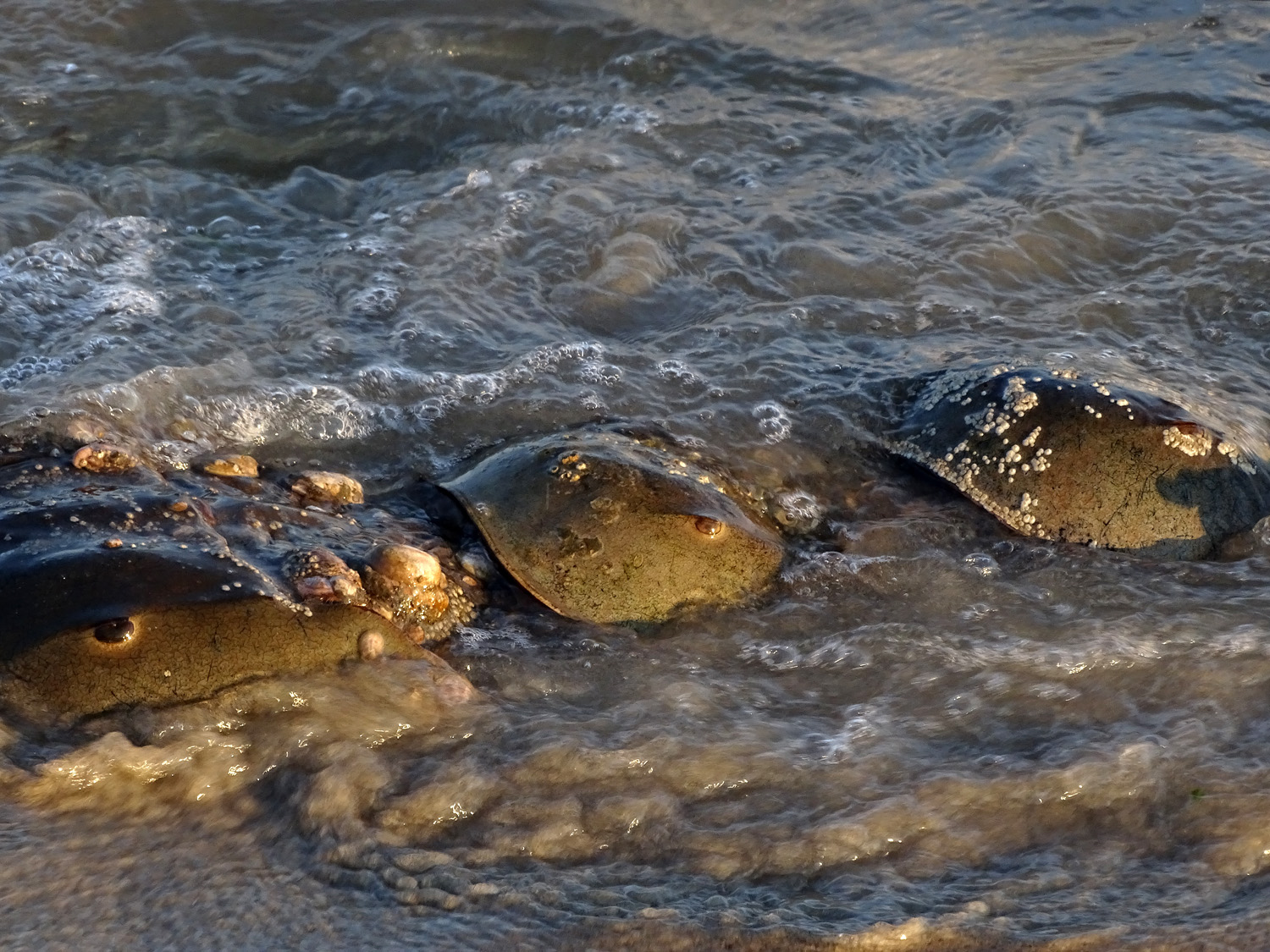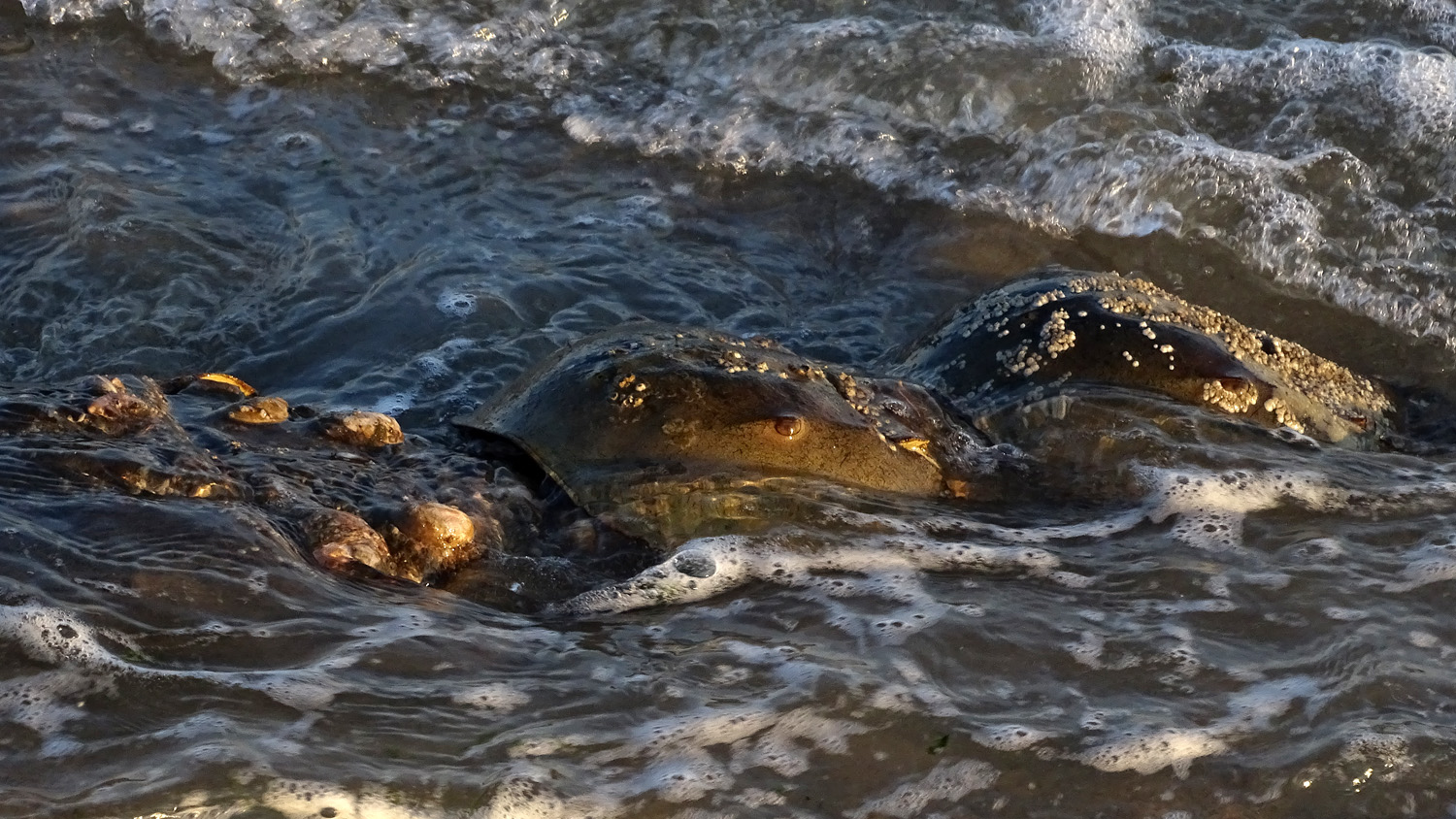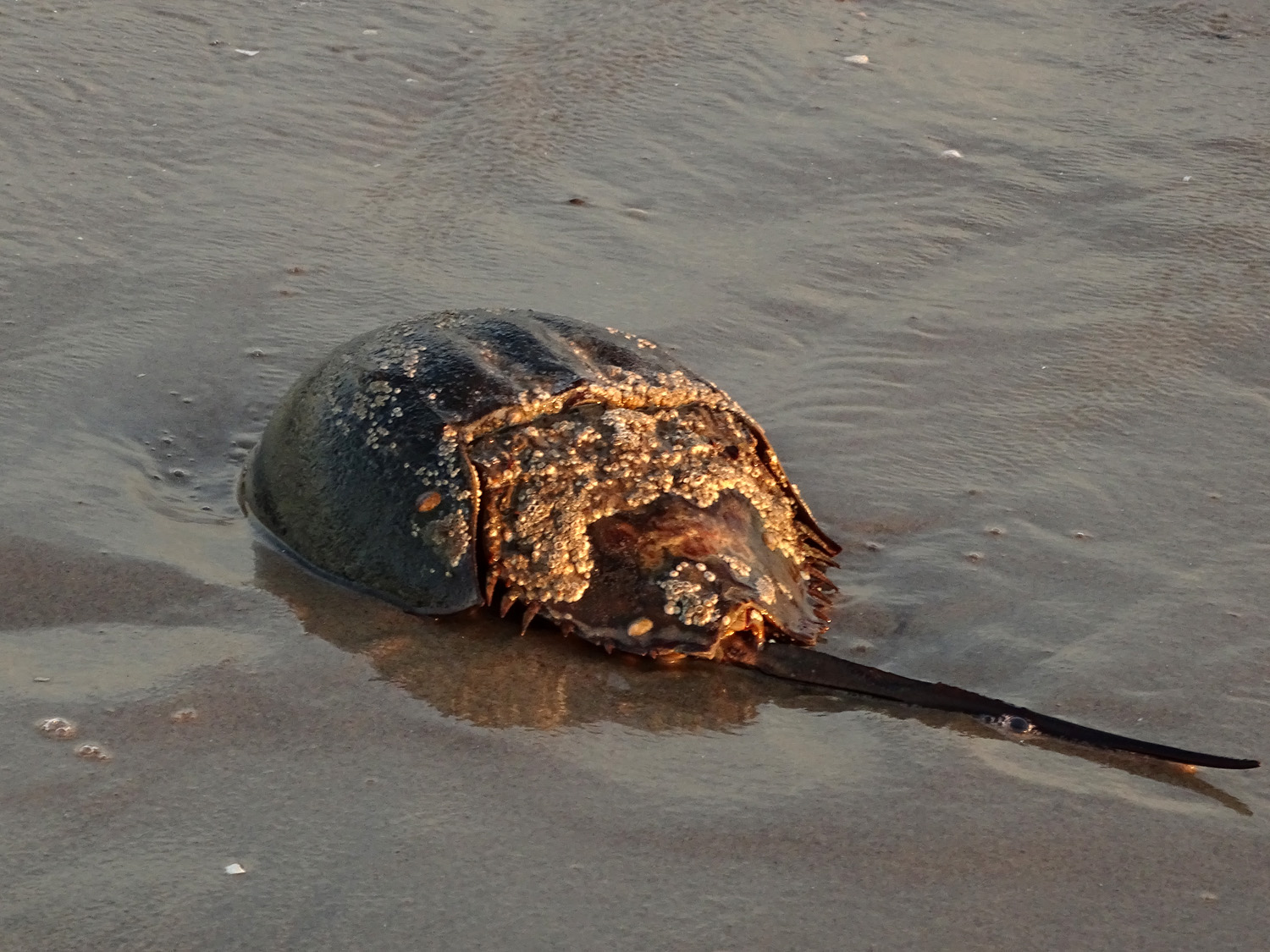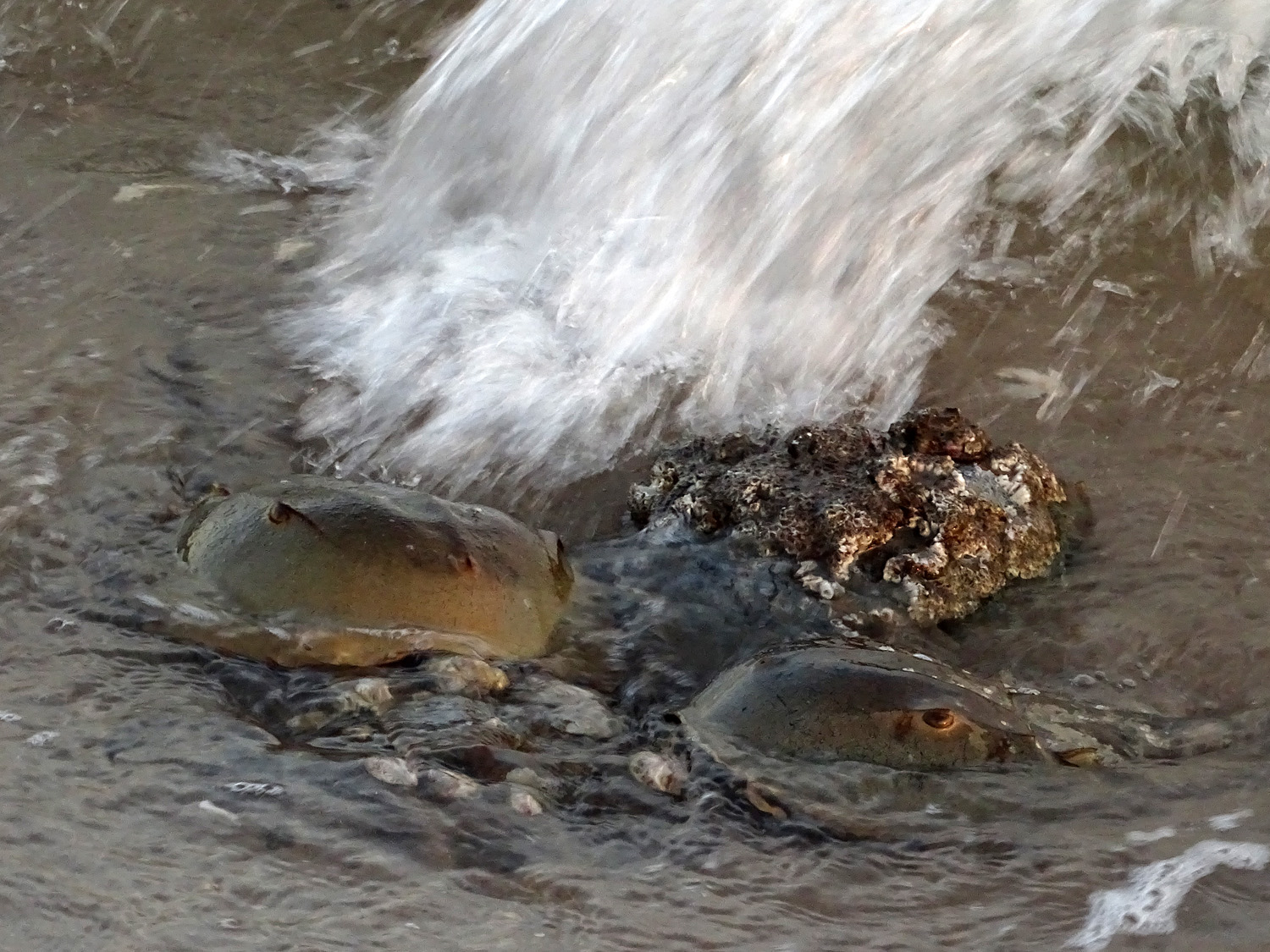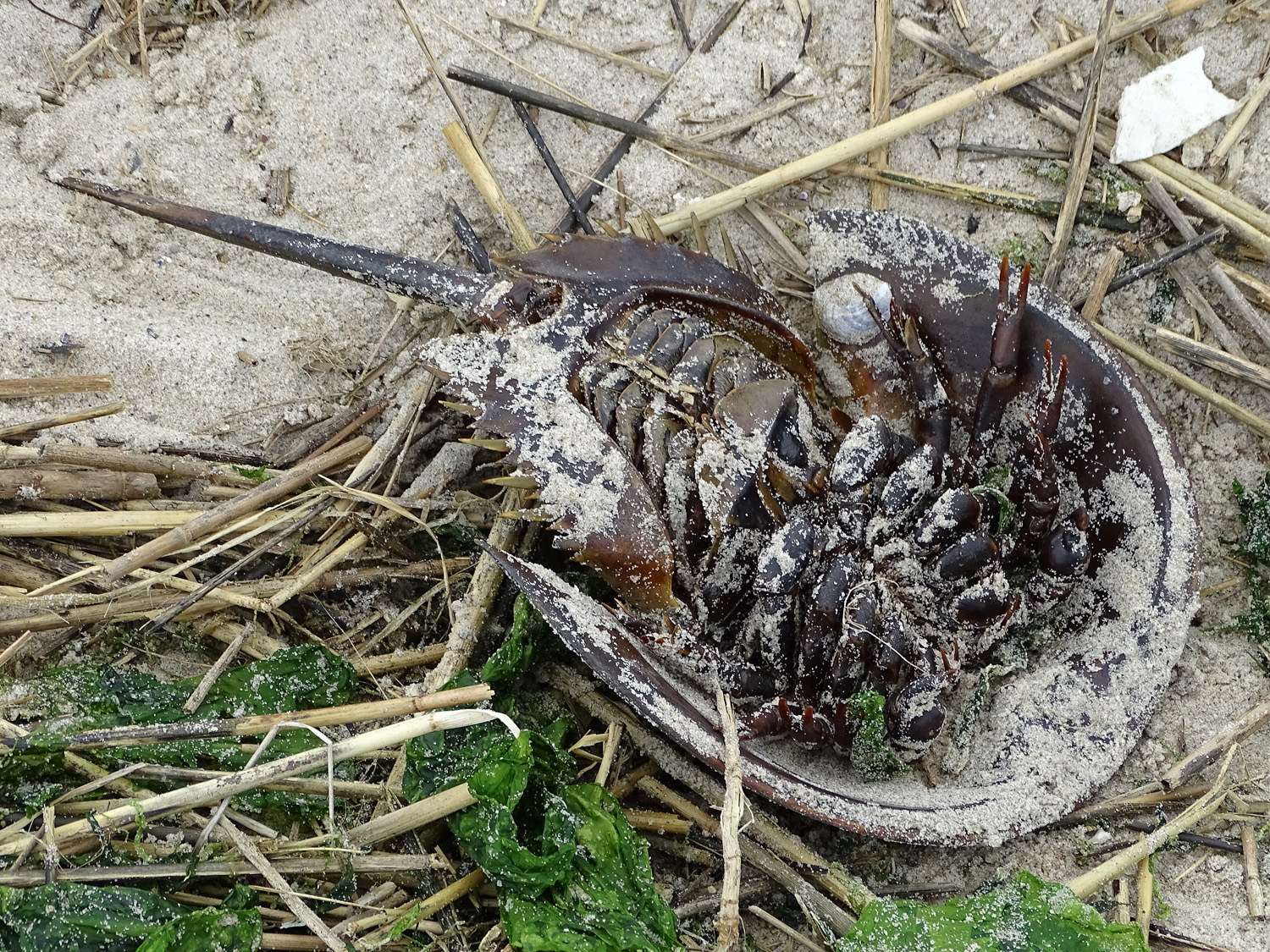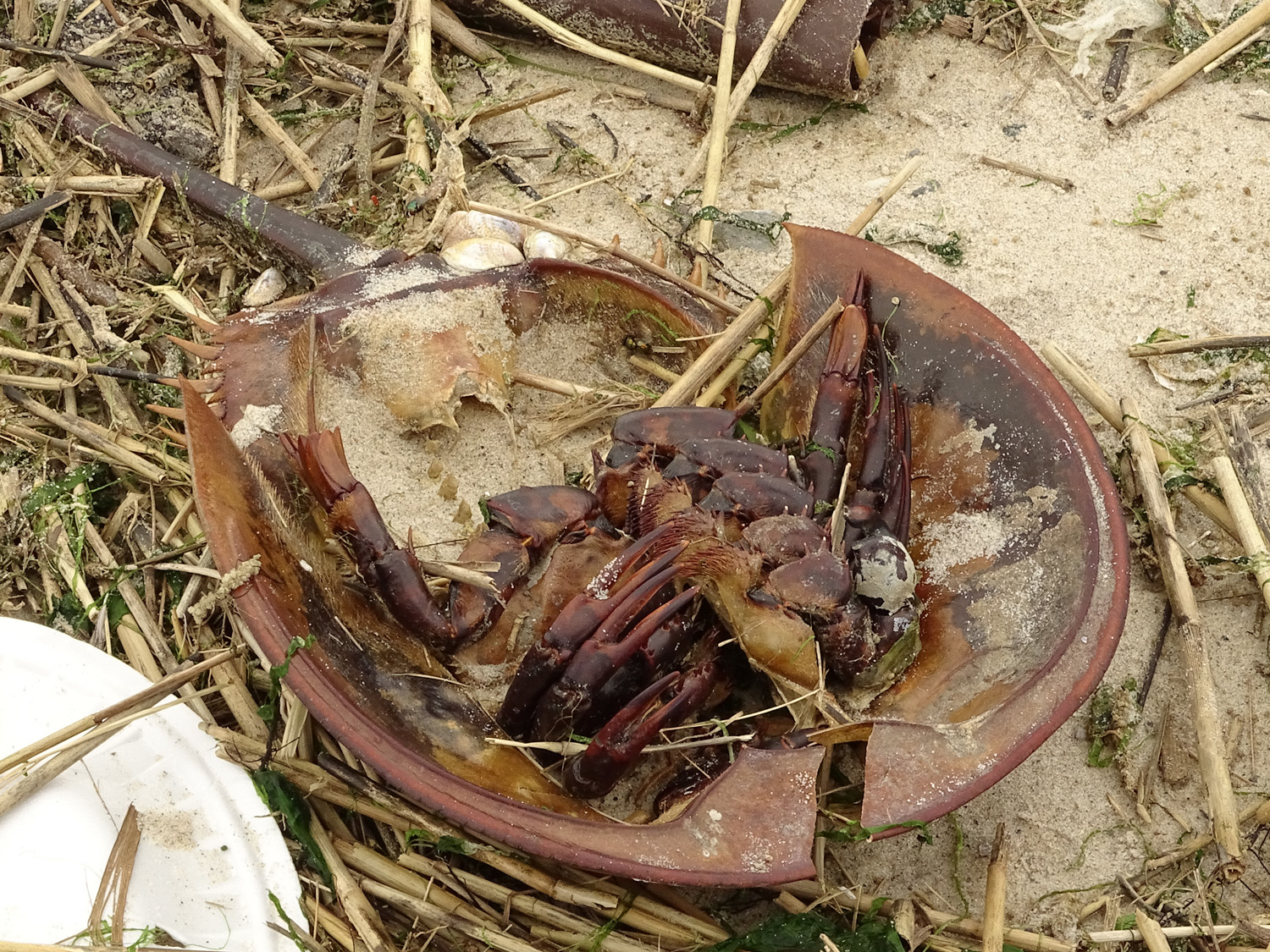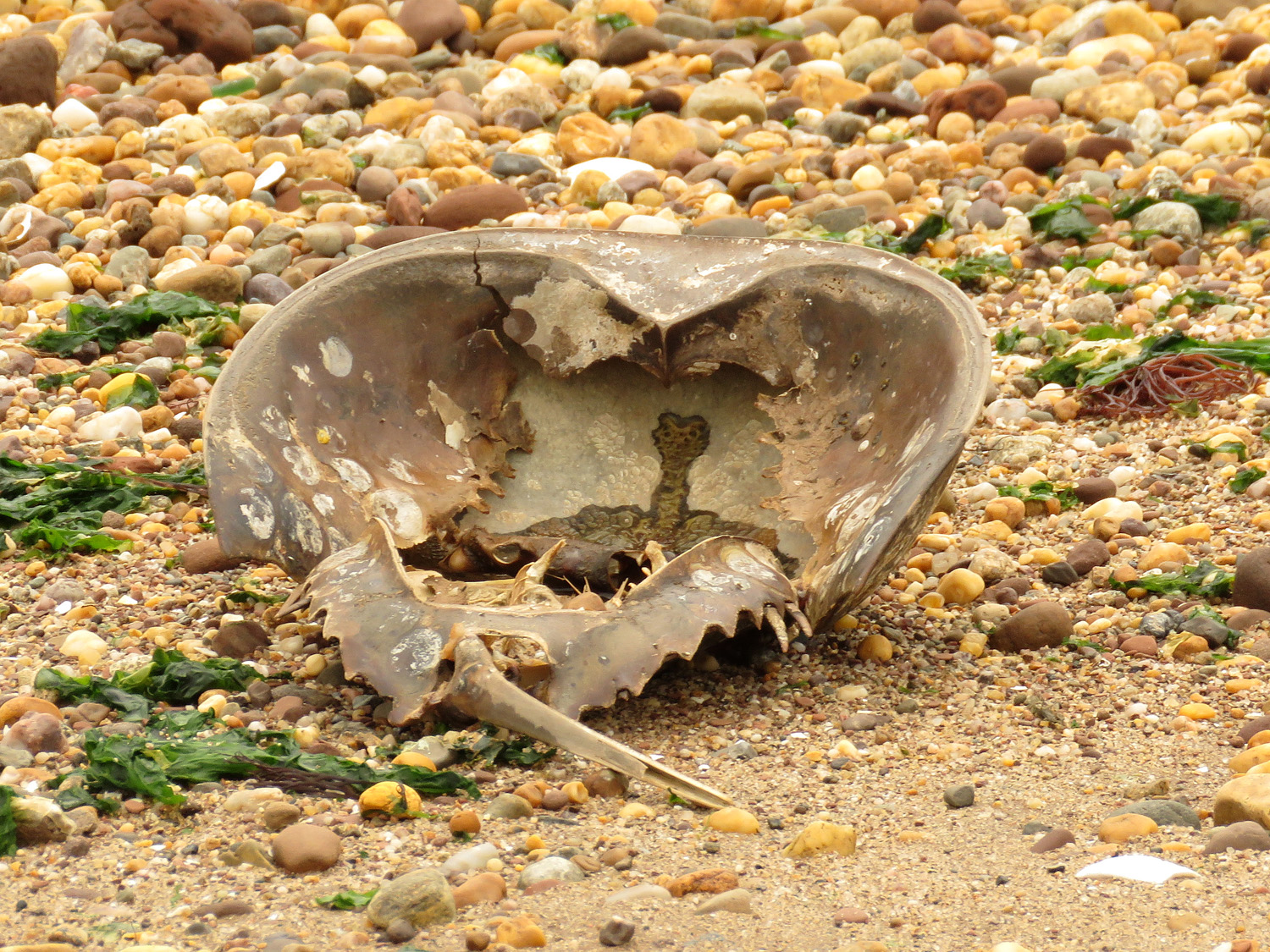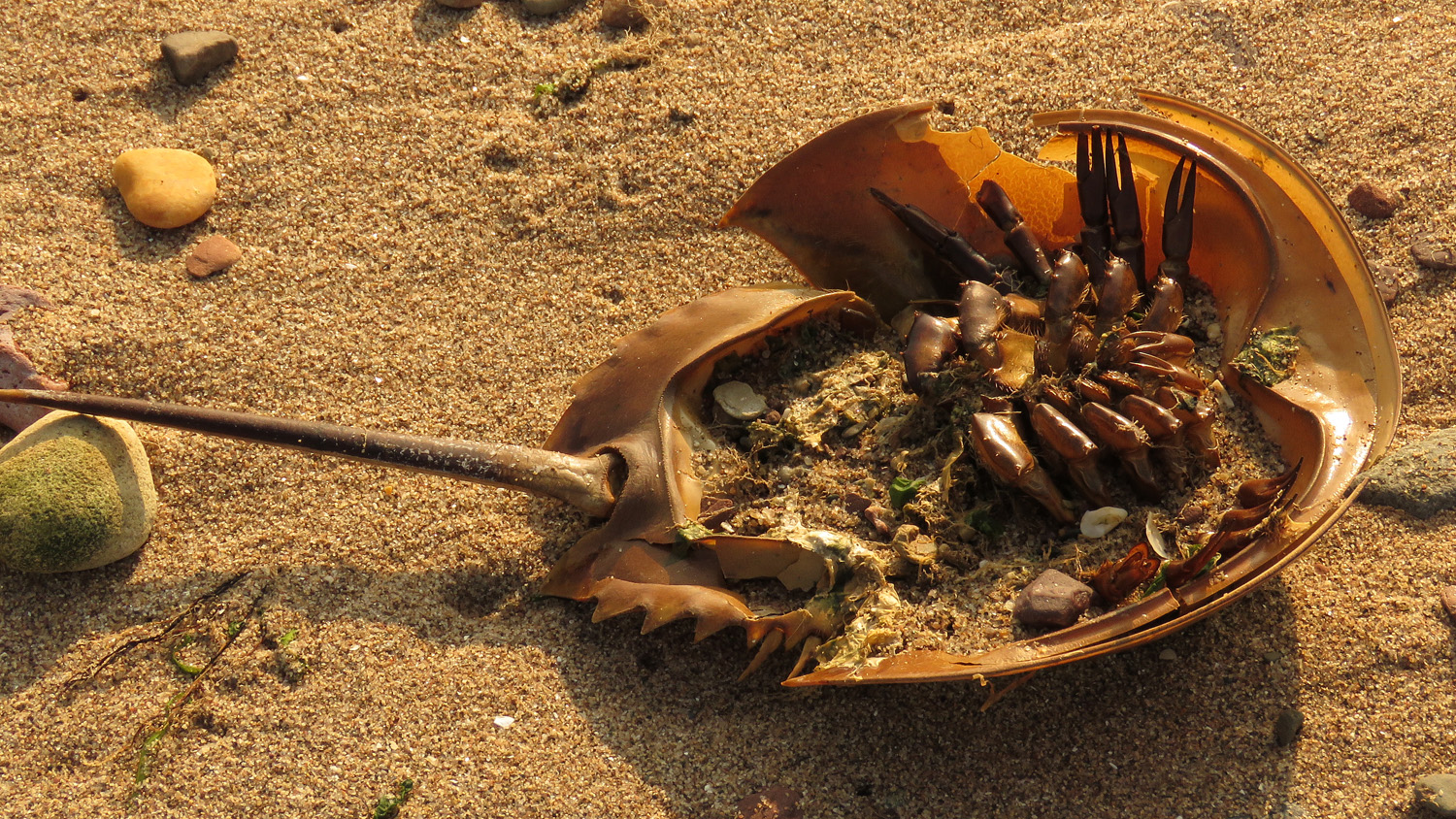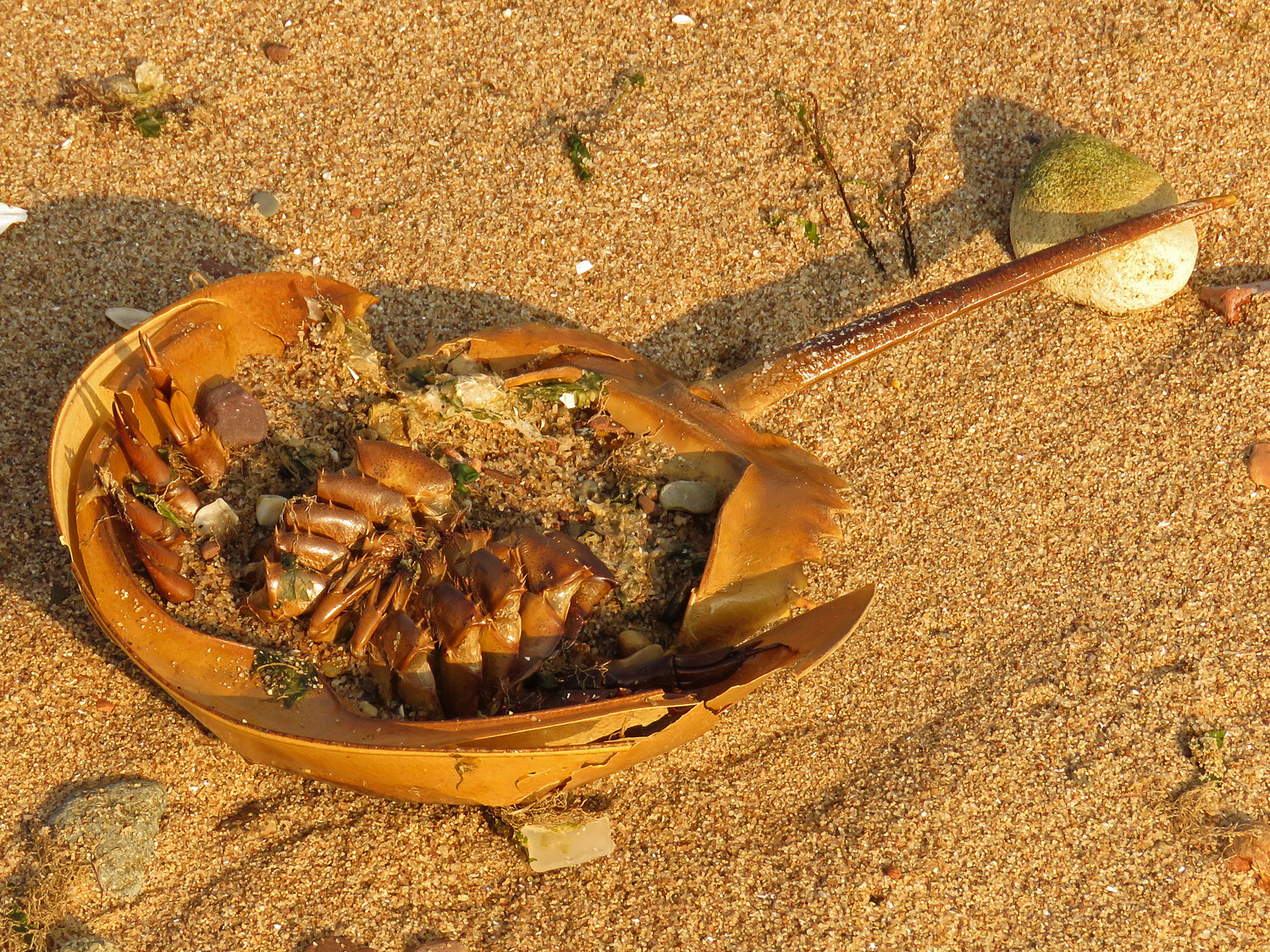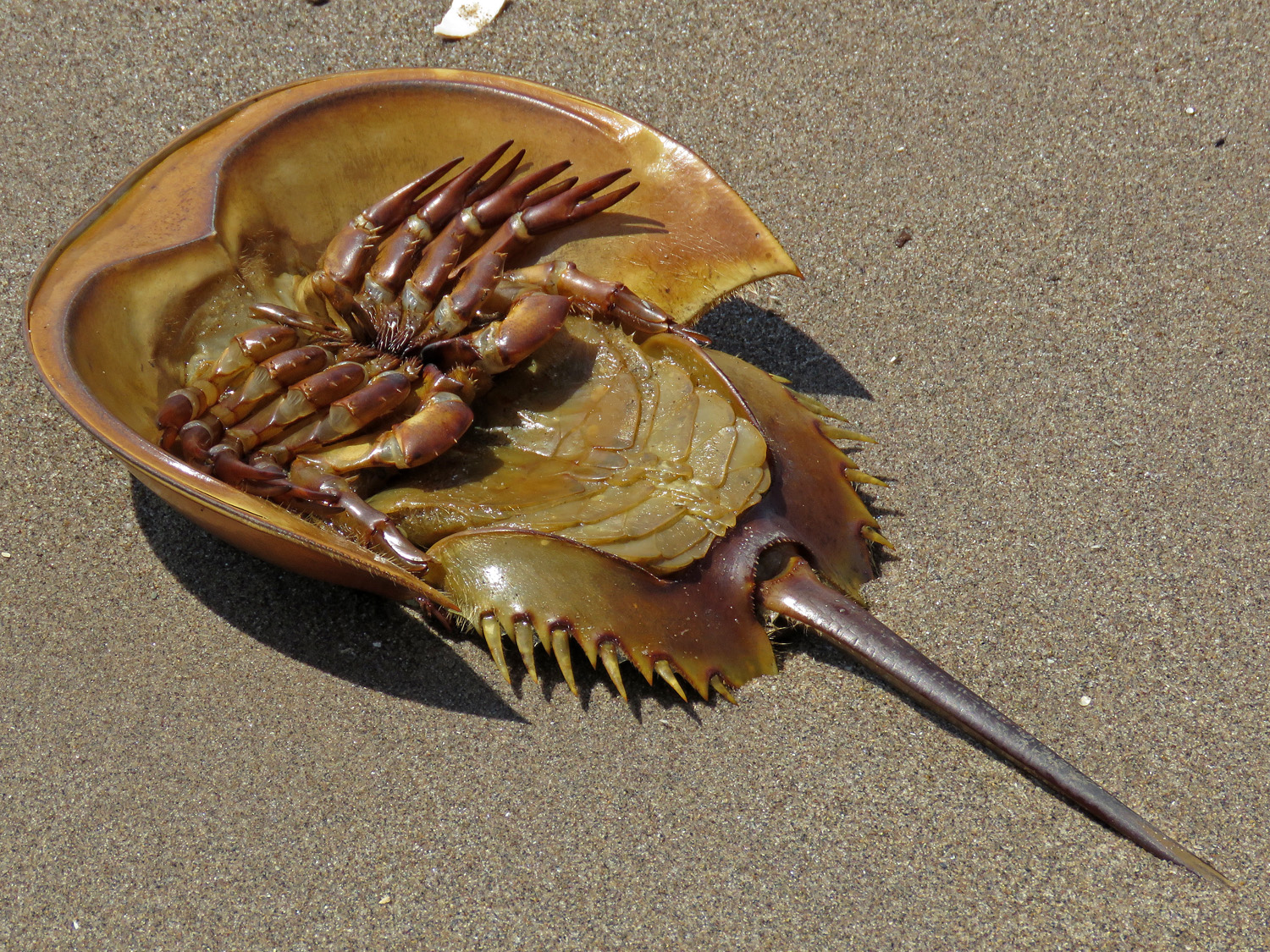For more than 300 million years, horseshoe crabs (Limulus polyphemus) have left the ocean depths to go onshore to breed. In New York, these ancient animals, more related to scorpions and spiders than to crustaceans and older than the dinosaurs, come to our many shores at full moons, new moons, and high tides beginning in May and continuing into June and early summer. On May 29, 2018, we went to Plumb Beach in Brooklyn close to high tide on a night with a full moon, and were rewarded as the female horseshoe crabs came onshore, with the males grasping onto them. The females dug a nest in the sand and laid their eggs, which the males then fertilized.
Breeding horseshoe crabs on Plumb Beach, Brooklyn, May 29, 2018
Horseshoe crabs have 10 legs, which they use to walk along the ocean floor. They have hard exoskeletons, and nine eyes spread throughout their bodies, plus light receptors near their tails, or telsons. These long, pointed telsons are not used to sting or poison, but to help the horseshoe crabs right themselves if waves push them on their backs.
Horseshoe crabs use their long tails to right themselves if they are turned over. You can see some of the ten legs in this photo.
Barnacles on a horseshoe crab, Plumb Beach, May 29, 2018
The video showing the horseshoe crabs coming to shore was filmed on May 29 at Plumb Beach, using the soundtrack of the waves. Also in the video are some clips from other beaches throughout the city where I've seen dead horseshoe crab shells, which are beautiful in their own right. Our trip to Plumb Beach was led by Keith Michael of New York City WILD!
On the beach at Plumb Beach with the New York City WILD! group, looking for horseshoe crabs, May 29, 2018
The horseshoe crab eggs, tens of thousands of them, are a food source for fish, reptiles, and birds. About two weeks after the eggs are laid and fertilized, those that survive hatch into larval horseshoe crabs, which are tiny versions of the adults but without tails. These youngsters settle on the sandy bottom of tidal flats, where they grow and molt, shedding their exoskeletons and growing larger ones, as they move farther into the ocean depths. Once they become adults, roughly 10 years old, they begin the breeding process.
These photos show the breeding horseshoe crabs at Marine Park in Brooklyn on May 24, 2018, and at Plumb Beach on May 29.
These photos were taken in 2017 at various beaches, and show the shells of various dead horseshoe crabs that lay on the shores. Some still had the legs, others had been cleaned out by gulls and other birds. All displayed beauty in the shells.


